
Logan and Albert Conservation Association

The Green Army and other crazy ideas
- first published in EcoNews from SCEC May-June 2013
Recent surveys in Australia and the US have found majority support for action on climate change. Clearly, even in these last bastions of climate denial, there is growing acknowledgement that we are facing a frightening future which will demand the employment of the best contemporary knowledge to come up with the most creative solutions, if we are to maintain our quality of life into the future.
But not the Federal Coalition. It is the conservative way to look back to the golden days of the past (and the Tea Party) for policy inspiration, and when you've backed yourself into a corner on carbon pricing with nowhere else to go, why not cobble up a crazy story and try to make it sound believable?
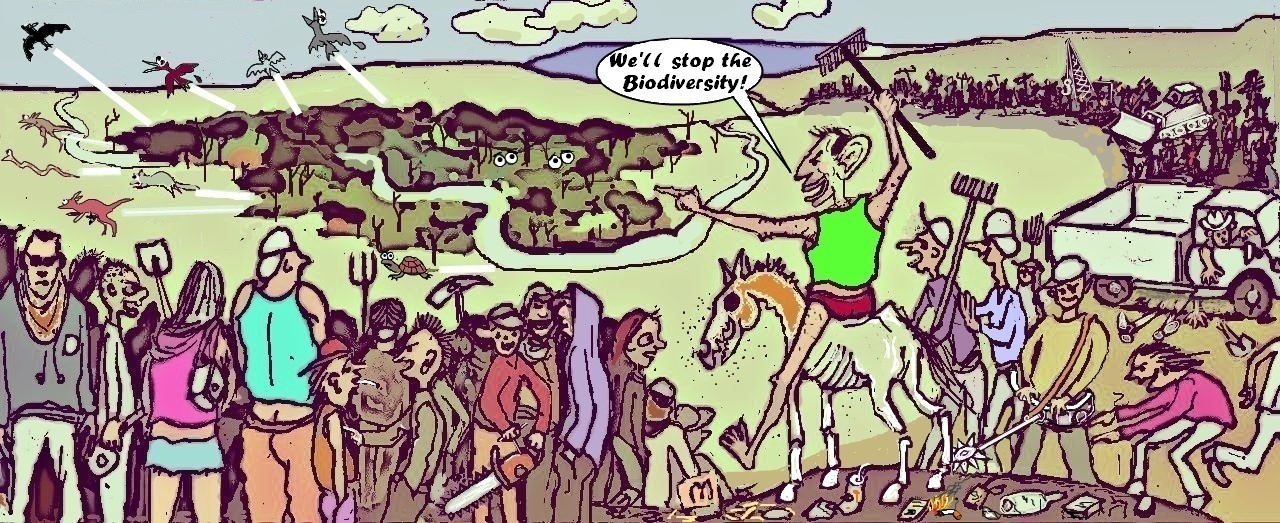
So what better for the Coalition than to reinvent the conservative ideology of 'work for the dole', combine it with Howard's Greencorps, dress it up as carbon reduction, and create a Green Army of 15000 to be recruited from somewhere within the ranks of the unemployed, disenchanted, and confused?
The Green Army is tasked with planting 20 million trees by 2020, and this has become a major plank in the Coalition's 'Direct Action' policy - a title with a swaggering, cut the crap, General McArthurish appeal to those voters who, the Coalition hopes, won't think too much about it. Furthermore, 'Direct Action' echoes notions embodied in the Coalition's 'delivering frontline services' mantra - in this case, doing the carbon abatement 'here, in Australia, where we benefit directly from it'.
All sounding fair enough?
Well, no. The science is becoming far less certain around a second key plank in the Coalition's Direct Action policy - soil carbon's value for carbon sequestration – and economists almost universally condemn a third plank - the competitive grant scheme (effectively a carbon tax in disguise) where the government will buy reverse auction emissions reductions bids from businesses - because it will result in enormous administrative loads and ballooning taxpayer costs.
As a result, the Coalition is finding that its Direct Action solution for carbon reduction is looking shakier than ever (although would-be deputy prime minister Barnaby Joyce still can't see anything wrong with it because it sounds good and... should work anyway, whatever).
To avoid looking too silly the Coalition has quickly advanced the Green Army forward as the flagship solution, particularly for its neat opportunities to create warm fuzzy propaganda about winning community hearts and minds and boot-camping 'lazy' youth, but especially because it will provide endless ministerial photo ops around 'mission accomplished' tree planting events.
If we do try to assume for a moment that the Coalition in Government will be genuine about using the Green Army to help achieve their commitment to a 5% carbon emissions target by 2020, then the deployment of this 'army' will have to be at the very least on the 'shock and awe' scale.
However, military jargon has always specialised in turning gore into glory. This will not be a disciplined army but a loose collection of 'militia', shanghaied for the job of planting 20 million trees by 2020, with a care factor somewhere around zero. And, if the Green Army is genuinely intended to meet its targets, it is the size, scale and speed needed to achieve its objectives that will create ugly problems.
At 15000 strong, the 'Green Army' will be larger than most state police forces, over half the size of the Australian army and similar to the air force and navy, without the supporting infrastructure that these bodies have. It will be composed of young, generally poorly committed novices, learning as they go, conscripted for just six mistake filled months before being replaced by new recruits - their tour of duty terminating just as they might be starting to 'get it'.
And this is one of the core problems. There is nothing wrong with planting lots of trees, but it has to be carried out with science and sympathy because ecosystems are very complex and enormous damage can be done through otherwise well-intentioned restoration schemes.
And the challenge is huge - according to their Direct Action Plan, the Coalition aims to offset 15 million tonnes of emissions by 2020 through tree planting. To achieve this it has been estimated that an area of 25,000 square kilometres will be required, plus about 9,100 GL of water - two and a half times that proposed for the Murray Darling Basin Plan.
So it will not be a trained and disciplined army which will face these impossible challenges, and the collateral damage is likely to be severe. Biodiversity will be the big loser, but also water quality and farming may be impacted, and communities and local councils will be obliged to pick up the pieces. Most pertinently, the objective of sequestering enough carbon to meet the 2020 five per cent carbon reduction target simply cannot be meaningfully assisted by planting 20 million trees in this way, within this time frame.
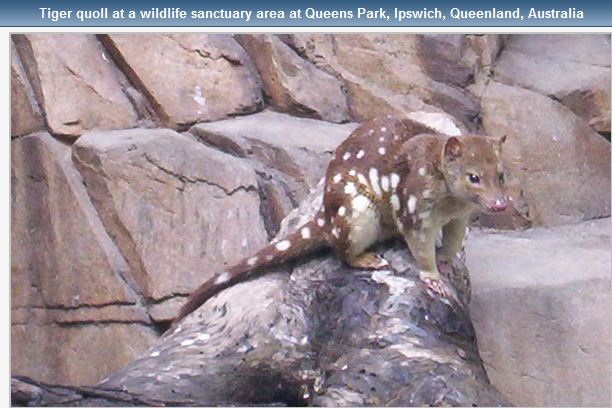
Our organization is regarded by some as extreme and anti-development, however we do support ecological sustainable development, and accounting for the value of natural capital. Many scientific studies and reports - peer reviewed and published - support our concerns. It is extraordinary that scientists with expertise in biodiversity conservation and sustainable development have publicly expressed grave concerns about the future impacts of proposed changes to Queensland's Vegetation Management Act and the Water Act. See their website http://concernedqldscientists.wordpress.com/.
Be informed and read government documents
Vegetation Mananagement Framework Bill - passed State Parliament Tuesday 21 May 2013. Natural Resources Minister Andrew Cripps said in a statement issued to Queensland Country Life that the passing of the Vegetation Management Framework Amendment Bill 2013 marked the beginning of a new era of sustainable agricultural production in Queensland
In addition World Wildlife Fund have produced WWF Report – Bushland at risk of renewed clearing in Queensland. Read it here.
Prominent among threatened species are the koala, Glossy black-cockatoo, Spotted-tailed and northern quolls. Many of us "do the right thing" but equally we are not necessarily well informed. What do farmers understand by sustainable agriculture?
The traditional big agribusiness is not sustainable when all costs are accounted. Dollars certainly count but who will pay long term when land becomes desert - as has happened.
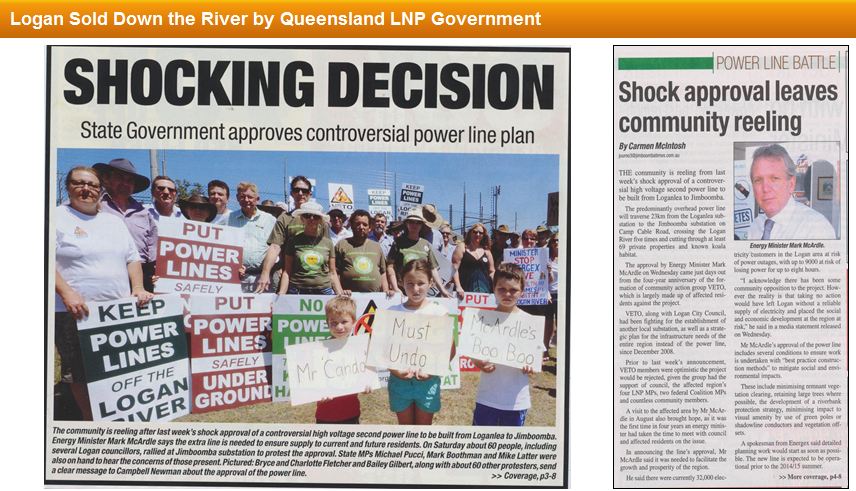
Pre-election promises of the Campbell Newman led LNP government have been broken and the local members must also feel our disappointment. A platform based on the four pillars of economy, construction, tourism and agriculture leaves both natural and built environment out of the equation.
Click on image to read article.
Disinformation is also challenging to deal with - especially when government changes the rules to suit its 'development at any cost' agenda - cost being only dollars for construction. Follow detailed history at VETO's website for analysis of issues an alternatives. Queensland Minister McArdle's approval of the second Loganlea to Jimboomba 110kV powerline allows Energex to continue to "Gold Plate" their network with more "poles & wires" when other alternatives are available.

Click on image aside to see infographic.
Biodiversity conservation, protecting vulnerable landscapes and sustaining livelihoods in developing countries are all projects to receive funding from World Bank.
Overexploitation, habitat destruction, introduced invasive species all contribute to loss of biodiversity - worldwide - and especially in SEQ South East Queenland - a biodiversity hotspot.
Clearing greenfield areas to replace with human settlement preceived needs - housing, roads, hard infrastructure items will destroy the values that draw people to SEQ.
We are paving paradise to put up a parking lot in the words of Big Yellow Taxi by Joni Mitchell.
A healthy functioning ecosystem depends on the long term survival of the species which have adapted to live in the area. Maintaining these healthy ecosystems is esssential for human health and well being.
Bushland areas and wetlands provide more than visual amenity. Clean air, clean water and productive soils with their living creatures provide the comfortable liveability of our human places.
At a local level LACA has been alerted to proposed changes to extend the urban footprint in SEQ. This is alarming and LACA's immediate response has been to send a letter to the Premier, and Deputy-Premier Hon. Jeff Seeney MP Minister for State Development, Infrastructure and Planning. Our already endangered koala could face further threats.
Read our letter here.![]() Amendments-to-SEQRegionalPlan_Sept9-2012__letter.pdf231.33 KB09/09/2012, 18:41
Amendments-to-SEQRegionalPlan_Sept9-2012__letter.pdf231.33 KB09/09/2012, 18:41
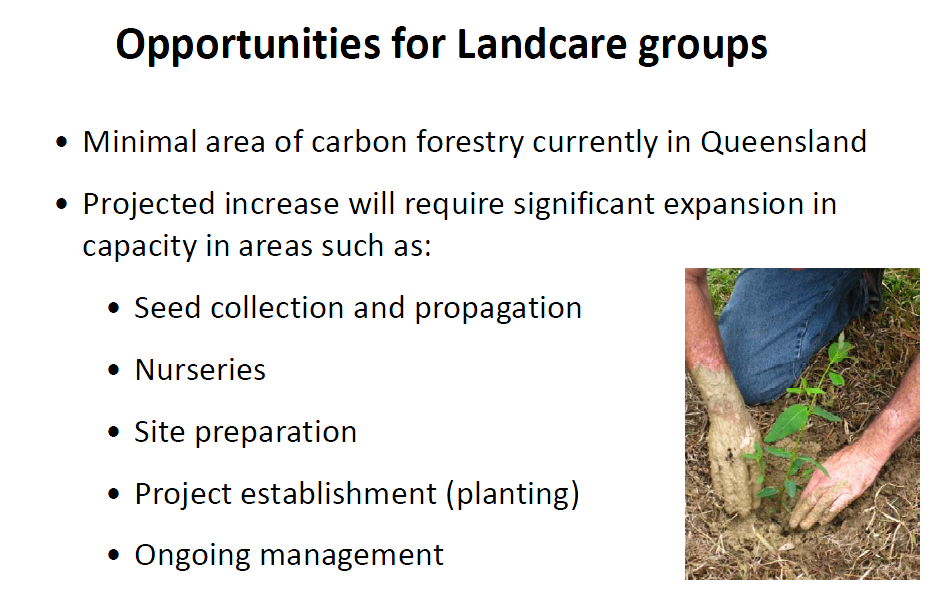
Carbon price scheme is not a tax: It is an emissions trading scheme with a fixed price for the first three years to enable industry and institutions to set up for the market stage. The level of emissions is set by government up front, and the market then responds.
How the carbon price will operate: In the Australian scheme, only the top 500 or so polluters (ie those emitting greater than 25000 tonnes of CO2) will pay the fixed price (starting in 2012 at $23 per tonne CO2 emissions.) Under the fixed price carbon policy, each large polluter must purchase one permit for every CO2 equivalent emitted. It will be able to purchase these permits from the government at a fixed price. This works like an emissions trading scheme, except the price is fixed by the government for three years to allow industry and business to 'tool up' before the market begins takes over determining the price. 50% of the amount paid by the major polluters will be directed towards compensating households for any small costs passed on.
Funding directly associated with the Carbon price: In addition to compensating 9 out 10 households for any flow-on costs, the carbon price scheme will provide for the establishment of the Biodiversity Fund ($946 million), the Carbon Farming Futures (management practices $429 million) and the Carbon Farming Initiative (opportunities for farmers through carbon offsets), $10 billion in a new commercially-oriented Clean Energy Finance Corporation (CFEC) and a range of other support services and programs.
Aim of the carbon price: The carbon price scheme is aimed at putting downward pressure on fossil fuel use over time in our economy. Australia produces about 500 million tonnes of carbon pollution each year, making it one of the top polluters in the world per head of population. Currently, polluting is free. With the introduction of the carbon price scheme, industry must factor in the cost of carbon pollution in their business, just as they factor in materials and labour. The carbon price is actually a recognition of the need for industry and business to pay for 'externalities', where these affect the community and future generations.
The real question for each country, including Australia, is what is the appropriate policy to move the country into a world of new, non-carbon polluting technologies, and keep the country competitive in an environment in which all of our major trading partners are pricing carbon?
 At times we humans feel threatened by some of our native animals and call for government to protect us from these creatures we cannot control. What can we control? Animals that are vulnerable to our physical strength suffer many inhumanities - based on inherited practices. Since 2008 laws in Queensland have protected threatened flying-foxes from being shot and electrocuted, requiring farmers to use non-lethal methods, such as netting, to protect their crops. But the Liberal National Party have said that if elected they will overturn these laws. This backwards step in animal protection may once again mean flying-foxes can be shot and electrocuted, causing widespread suffering and further threatening this dwindling species' numbers. Katter's Australia Party have also made some worrying statements about animal welfare.
At times we humans feel threatened by some of our native animals and call for government to protect us from these creatures we cannot control. What can we control? Animals that are vulnerable to our physical strength suffer many inhumanities - based on inherited practices. Since 2008 laws in Queensland have protected threatened flying-foxes from being shot and electrocuted, requiring farmers to use non-lethal methods, such as netting, to protect their crops. But the Liberal National Party have said that if elected they will overturn these laws. This backwards step in animal protection may once again mean flying-foxes can be shot and electrocuted, causing widespread suffering and further threatening this dwindling species' numbers. Katter's Australia Party have also made some worrying statements about animal welfare.
Inhumane practices extend to our companion animals and livestock that provide food. Life in the fast lane has distanced us fron nature - its ambience and tranquility, its free ecosystems sevices such as clean air, clean water, pollination of plants for beauty and food. A life of convenience comfort and pleasure - bought as cheaply as possible - is expected now by many.
2012 - the year of RIO+20 is a time for reflection of our values aspirations vision for the future - a sustainable future for both the human species and all other interdependant life. This global summit needs to matched at our own local and regional levels as we go about our daily lives - respecting and valuing all forms of life - biodiversity.
Admittedly some folk feel a colony of flying foxes may be noisy and somewhat messy, but others value the services provided - from pollinating our eucalypt trees to devouring thousands of small insects. We can not duplicate those services. Imagine an Australia without gum trees!
Fear of death from Hendra virus has been dramatised in the media and demonised the flying fox. In reality there are far greater hazards we contend with on a daily basis. In most instances managing our own human behaviours can reduce risks.
Our ever growing human population is placing a heavy burden on the world's resources. In Australia we have a species extinction rate which is embarrassing. Becoming well informed conscious consumers is everyone's responsibility. Learning to live lightly on the planet can only help to preserve its biodiversity.
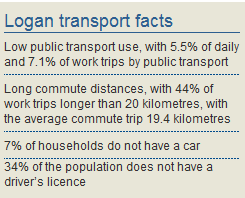
The following is part of LACA's submission to DTMR to object to both the decision to construct a six lane freight motorway impacting on significant wtland areas and also the method of "consultation" used to validate their decision.
LACA does not believe there is a viable corridor for the Park Ridge Connector Road because there are existing communities and environmental assets in the area proposed for the corridor. LACA has stated this position clearly since the beginning of the CSRG process and has continued to communicate this position at all times.
LACA is extremely concerned that the significant environmental issues are being ignored by Main Roads, despite LACA's ongoing communication of our environmental concerns since the beginning of the Community Stakeholder Reference Group or CSRG process. LACA has been particularly concerned that the biodiversity hotspot of Jerry's Downfall Reserve-Flesser Reserve continues to be targeted for an infrastructure corridor, when it is such a significant biodiversity area and bioregional corridor. LACA has also continued to voice its concern for the northern bioregional corridor of Karawatha – Greenbank-Flinders Peak ,Berrinba Wetlands and Scrubby Creek.
LACA believes that this consultation process has been deficient and members of the CSRG have communicated their concerns that they felt like they were being lead by Main Roads throughout the CSRG process. LACA is also very unhappy at the short consultation time frame given to the general community to peruse the EAIR document - ENVIRONMENTAL ASSESSMENT AND INVESTIGATION REPORT - and supporting evidence. LACA has continued to request an extension of time to this consultation from the beginning of the public display period

In summary, the PRC Motorway is a Queensland State government initiative, supported by the Logan City Council (LCC) to build a 6 lane (100 metre wide) extension to the Logan Motorway south from Wembley Road (Berrinba) to Granger Road (Park Ridge south) with future extensions planned to the area north of Camp Cable Road, Jimboomba. The primary function of this motorway is for long distance freight from the Logan Motorway through to Bromelton.
The community of concerned citizens have set up a website - including a forum if you want to discuss your concerns and issues. Go to http://www.noprc.org/ , download the flyers to share with your friends who are not online especially this one which provides a summary of issues and contact details
Join the FACEBOOK page http://www.facebook.com/NoPRCGroup
Logan and Albert Conservation Association Anne Page, 07 3297 0624 (AH), This email address is being protected from spambots. You need JavaScript enabled to view it.
Brisbane Region Environment Council Ted Fensom, 07 3801 2097, This email address is being protected from spambots. You need JavaScript enabled to view it.
This whole process is irresponsible planning - as has been shown to be the case with ENERGEX and their proposal to duplicate power lines and build towers on flood prone land. An independant report commissioned by the Minister for Energy has not supported the current ENERGEX proposal. We await the ministers decision on this project
A TRANSPORT AND MAIN ROADS "investigation / consultation" that fails to look at the use of public transport and cycleways for daily mobility - not just recreational riding is deficient to say the least.
There is growing awareness globally - very slowly at local levels - of the value of intact functioning healthy ecosystems - biodiversity infrastructure is a term LACA has coined. Globally nations are recognising the natural capital of the planet and universities such as Yale are delivering programs to students and others, making full content available online. The Economics of Ecosystems and Biodiversity (TEEB) presents the foundations of valuation of ecosystem services, dynamic interactions of people and ecosystems and their impacts on local communities, sub-national and national policy and international agreements.
The potential and almost certain loss of several local native species should the PRC project proceed has an unimaginable cost - financial and otherwise s we humans do not yet fully understand the interconnected nature of all living species. Life as we know it depends upon all the invisible micro organisms are part of life's cycle.
 The Logan and Albert Conservation Association (LACA) does not support the use of critical ecosystems and habitat, wetland areas or areas of biodiversity for transport infrastructure corridors.
The Logan and Albert Conservation Association (LACA) does not support the use of critical ecosystems and habitat, wetland areas or areas of biodiversity for transport infrastructure corridors.
LACA does not support the degradation or loss of habitat, wetlands, biodiversity, or ecological corridors. For these reasons, LACA does not support any road corridor or any other infrastructure corridor that would degrade and remove the biodiversity, habitat or ecosystem functions and services for the area between the Logan Motorway and the Logan River.
LACA recognizes the value of protecting critical habitats, ecosystems, wetlands, riparian areas and biodiversity assets such as those at Karawatha Forest, Berrinba, 'Rosicrucian' land, Scrubby Creek, habitat that remains south of the Logan Motorway, Jerry's Downfall Reserve, Chambers Creek and the Logan River and its tributaries.
Calculation of the potential future carbon footrprint and offset now and in the future and providing this information to the community for accountability is essential to evaluate viability.
Investment in developing a SUSTAINABLE TRANSPORT PLAN which will reduce need to construct any further roads for motor vehicles including public transport options, comprehensive bicycle / motorized scooters/wheelchair lanes and independent mobility devices for disabled should be considered as a viable alternative to new motorways.
Globally many countries are applying The Economics of Ecosystems and Biodiversity [TEEB] PRINCIPLES to account for real cost of exploitation of natural environment for built infrastructure. These reports are available at www.teebweb.org. Our local and state governments would find these useful tools for evaluating loss of biodiversity and ecosystem services.
As a member of the CSRG LACA submitted OUR ENVIRONMENTAL VALUES. See them here. environmental_values_LACA_PARK_RIDGE_CONNECTOR_ROAD.pdf 142.99 Kb 05/11/2011, 12:54
environmental_values_LACA_PARK_RIDGE_CONNECTOR_ROAD.pdf 142.99 Kb 05/11/2011, 12:54
 Headlines and articles in papers almost always report our human fear of the flying fox or fruit bat - our important pollinator for gums and rainforests. The emotive language used in a recent post The battle brewing over bats, the pariah of Australian wildlife does little to settle fears.
Headlines and articles in papers almost always report our human fear of the flying fox or fruit bat - our important pollinator for gums and rainforests. The emotive language used in a recent post The battle brewing over bats, the pariah of Australian wildlife does little to settle fears.
The fear of bats is being exploited by many press. Death directly related to flying foxes is minimal - 6 since 1994 while more than 30000 children die daily from polluted water supplies. More horses have died from other causes eg culling and toxic weeds in the paddock than have died from Hendra. Understanding the ecology of natural systems and the interaction of all the biodiversity interacting together - biodiversity infrastructure - is critical to our human survival on the planet.
TEEB The Economics of Ecoysytems and Biodiversity a tool which places a monetary value on the services and goods that nature provides humans on a global scale. Yet we fail to consider these seriously when politicans and planners make decisions about human settlement and our creature comforts. We have cleared great swathes of land that would have provided habitat. The value of these services are being considered internationally - but not locally or at state level.
Elsewhere in the world urban dwellers are learning to live with brown bears and understand that what we do can attract them and also distract them away.
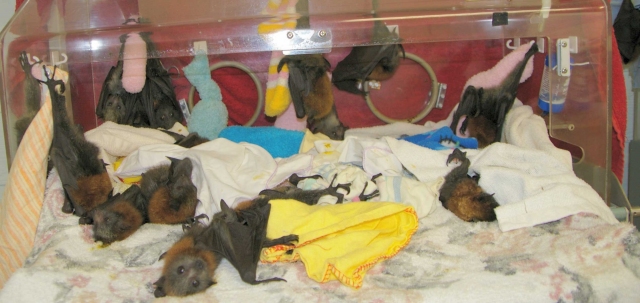 Baby bats in care are raised in a nursery situation and are cute and cuddly - if you've been vaccinated. Dogs with rabies is a health threat currently in Bali but travellers take the precaution of vaccination.
Baby bats in care are raised in a nursery situation and are cute and cuddly - if you've been vaccinated. Dogs with rabies is a health threat currently in Bali but travellers take the precaution of vaccination.
Learning to live with our native species - our wildlife - is critical for our human wellbeing on our one planet. Drastic actions to interfer with the ecology of other species may bring about unwanted and unplanned reactions.
The folk at Gayndah may have displaced some species of flying fox - or did they move of their own accord? I believe the black flying fox is now looking for a roost in the area.
Teaching with cruelty and fear is a method many of us have discarded. Respect for all species and their niche in the global system is long overdue.